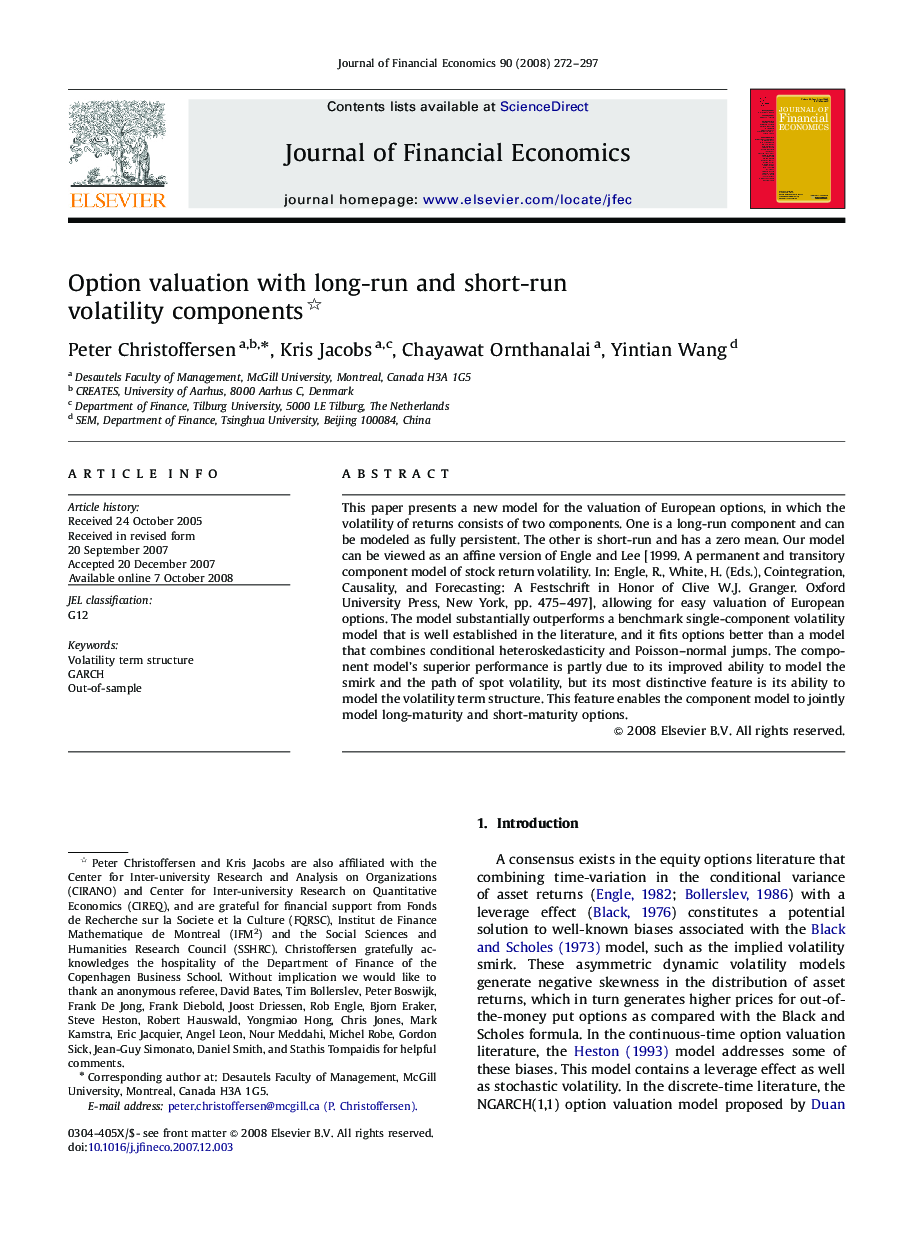| Article ID | Journal | Published Year | Pages | File Type |
|---|---|---|---|---|
| 960462 | Journal of Financial Economics | 2008 | 26 Pages |
This paper presents a new model for the valuation of European options, in which the volatility of returns consists of two components. One is a long-run component and can be modeled as fully persistent. The other is short-run and has a zero mean. Our model can be viewed as an affine version of Engle and Lee [1999. A permanent and transitory component model of stock return volatility. In: Engle, R., White, H. (Eds.), Cointegration, Causality, and Forecasting: A Festschrift in Honor of Clive W.J. Granger. Oxford University Press, New York, pp. 475–497], allowing for easy valuation of European options. The model substantially outperforms a benchmark single-component volatility model that is well established in the literature, and it fits options better than a model that combines conditional heteroskedasticity and Poisson–normal jumps. The component model's superior performance is partly due to its improved ability to model the smirk and the path of spot volatility, but its most distinctive feature is its ability to model the volatility term structure. This feature enables the component model to jointly model long-maturity and short-maturity options.
